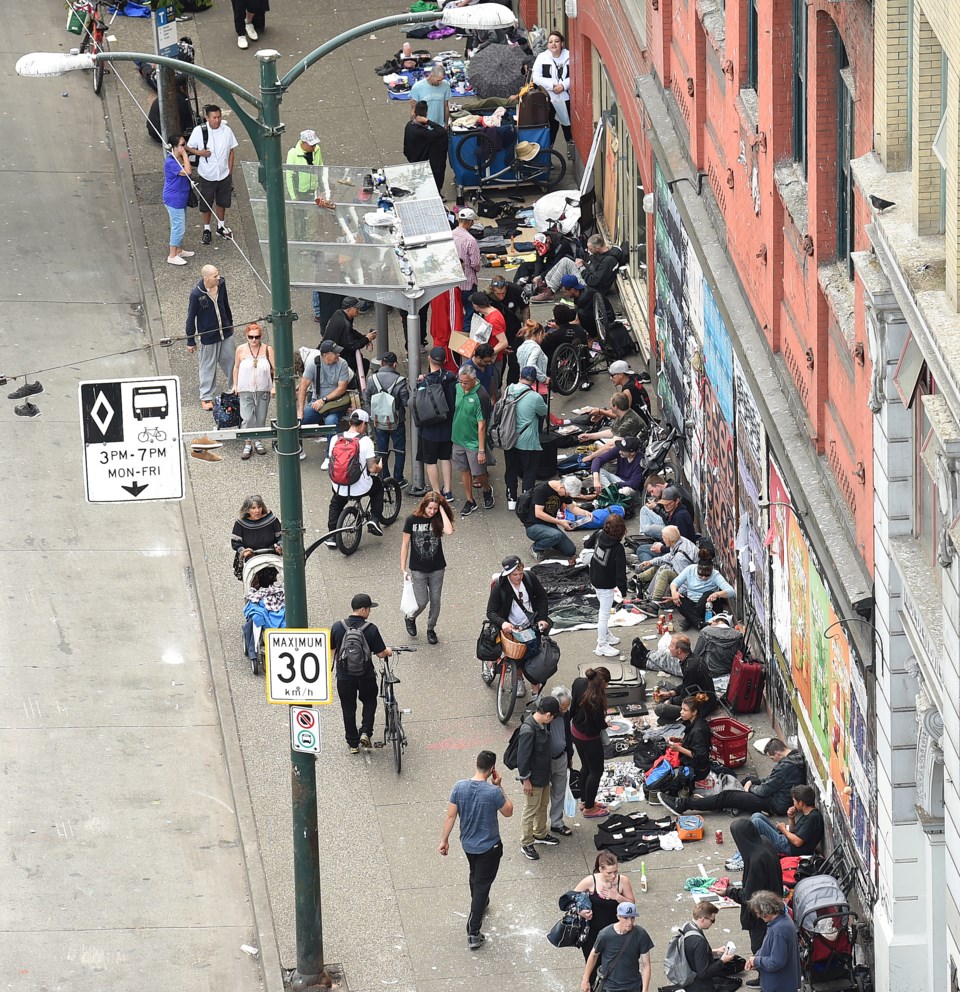As long as I’ve been in this job, I’ve heard countless strategies, ideas, recommendations and plans from well-meaning folks to better conditions for people living in Vancouver’s Downtown Eastside.
Doctors, health care workers, housing advocates, community residents, business owners, non-profit leaders, cops and politicians have all weighed in.
Still, the poverty persists.
But instead of me going back through my files to give you a comprehensive list of remedies to address homelessness, drug addiction, mental illness and the public disorder in the Downtown Eastside, I’m going to devote this space to someone who knows something about the neighbourhood.
Michael Clague is the former director of the Carnegie Community Centre. He was also the co-chairperson of the Downtown Eastside Local Area Planning Committee. Plus, he’s a thoughtful guy and many people respect him.
He contacted me recently after reading a story I wrote about the homeless people living in Oppenheimer Park. Attached with his email was his prescription — as collected over the years via studies, reports and field experience from people and organizations within and outside the community — for the Downtown Eastside.
He titled it, “It’s not magic.”
As I mentioned off the top, Clague acknowledged the ingredients for changing conditions for the better in the Downtown Eastside are well-known and proven. To be sustained, he said, they do require systemic change in policies and practices.
In other words, political will.
“And they do require new and re-allocated resources,” he said. “The issues are distinct and are fundamentally related. They have to be approached holistically i.e. officials and organizations need to transcend their established boundaries and mandates.”
Here is what Clague sent me:
Seven priorities
- Build shelter-rate housing in the DTES and throughout the city.
- Raise the shelter rate allowance.
- Give those currently living in the DTES the option of remaining in the community or relocating to elsewhere in the city.
- Provide social and health supports within a continuum of care 24/7 in those residences where they are required for the welfare of residents.
- Provide safe custodial residential care for residents whose condition is such that they are a risk to themselves and to others. This means that people at risk for self-harm and for harm to others are voluntarily and involuntarily living in supervised residences for designated periods of time to ensure they have the best available health care. Advocacy and legal guarantees are designed so that their inherent rights and liberties are respected.
- Remove restrictions on access to addictive drugs (decriminalize).
- Design and provide culturally relevant programs and services, especially involving the large Aboriginal community.
Six conditions
- Work respectfully with and learn from those most affected in the planning and provision of these seven priorities.
- Build on the strengths inherent in the community.
- Create volunteer and employment opportunities in the DTES and in the city at large, geared to people’s readiness, emphasizing opportunities to contribute to community life.
- Recognize and support the community arts as one of the most accessible, proven means for personal and community development.
- Recognize that the Downtown Eastside can be a healthy, predominately low-income community.
- Build informed support throughout Vancouver for these measures.
This may be old news to many, but possibly news to others.
It’s 2019, folks, soon to be 2020.
As Clague said, “it’s not magic.”
@Howellings



